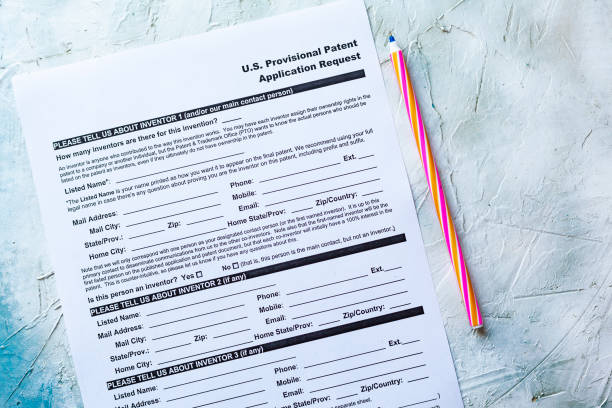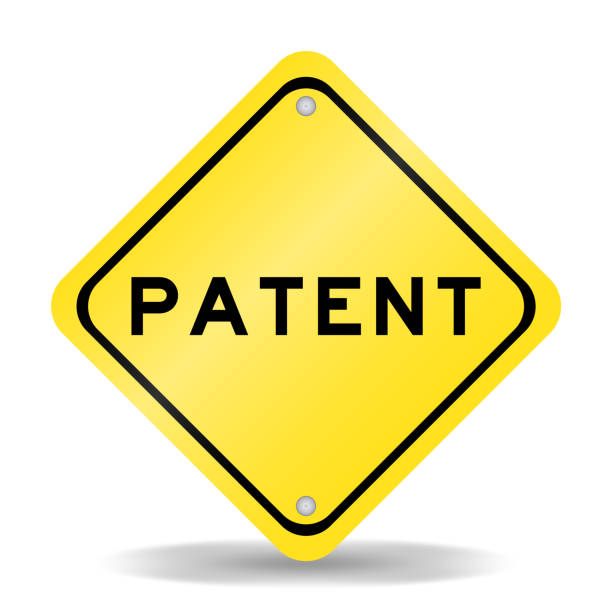If you’re an inventor with a great idea that you want to protect, filing for a provisional patent application is the most reliable way of doing so.
This simplified patent application offers you an early priority date, which is essential to securing a monopoly over your invention. Furthermore, it’s more cost-effective than a nonprovisional patent.
What is a provisional patent?
Provisional patents are patent applications that do not require formal claims, oaths or declarations. They give inventors the freedom to describe their inventions without needing many of the formal requirements that would usually apply in non-provisional applications.
Although a provisional application is not reviewed by any of the patent offices worldwide, it remains an essential first step for protecting an inventor’s intellectual property. It serves as a placeholder until they file for a utility patent application.
![]()
One major advantage of filing a provisional patent is that it allows inventors to utilize the phrase “patent-pending” in their marketing materials, giving their product credibility and helping them gain market share.
Another advantage of filing for a provisional patent is that inventors have more time to develop their inventions before having to file for non-provisional patent application. This extra time can be utilized for marketing, fundraising or fully developing their product.
An extension of time may be beneficial if the invention proves less profitable when first developed than later on, when a patent is granted. This is often true with medical devices which tend to have greater value at the start of their lifespan.
Filing a provisional application successfully requires that the inventor does not infringe upon any existing patents and does not make claims that are too broad. To accomplish this task, it’s best to collaborate with an experienced trademark attorney who can perform an exhaustive patent search.
A carefully written and executed provisional patent application will safeguard an inventor’s rights, providing a strong platform for subsequent non-provisional patent applications. Conversely, poorly drafted applications or those lacking sufficient details may lead to invalidated patents.
Finally, it is essential to comprehend that any invention disclosed in a provisional patent application will only be published if converted into a full non-provisional patent application within 12 months of the initial filing date. Failure to file such an application within these two years means the inventor forfeits their right to protection for that invention.
How does a provisional patent work?
Provisional patents are applications you can file at the United States Patent and Trademark Office (USPTO) to secure an invention’s priority filing date. This gives you time to experiment with your idea, secure additional funding for securing a utility patent, or keep refining your product before investing in more costly and time-consuming non-provisional patent applications.
Furthermore, a provisional patent gives you the advantage of a priority filing date without beginning the patent term clock. As the earliest possible patent term is one year, this time period is critical.
One of the key advantages of a provisional patent is its availability; you can file one as soon as there is public disclosure of your invention. This allows you to protect your rights while testing and refining your idea, plus it helps preserve foreign patent rights if other countries require “complete novelty” or “absolute novelty.”
Another advantage of a provisional patent is that you can use its filing date as the starting point for filing non-provisional patent applications on the same invention later. In the United States, non-provisional applications can claim priority over your provisional patent, so this ensures you get to lock in your earliest possible filing date.
When drafting a provisional patent application, make sure it sufficiently describes your invention in enough detail for someone skilled in the art to understand and utilize it without needing extensive experimentation. Furthermore, ensure that the application contains all information necessary to prove your invention is truly new.
This includes identifying all inventors, providing an accurate description of the invention, and answering legal questions related to it. These answers are used by the USPTO to decide whether your invention is truly new or not.
It’s wise to include patent claims in your provisional patent application, as this will inform the United States Patent and Trademark Office (USPTO) who owns the rights for an invention. This can be especially advantageous if you have inventors who must assign their rights to their employers or hired contractors with an undivided ownership interest in a patent.

What are the benefits of filing a provisional patent?
If you are an inventor or have created a new invention, filing for a provisional patent application is a great way to test the market for it. Doing this can help determine if investing in a full patent is worth the time and money invested.
Many startups and entrepreneurs are eager to get their products out there in the marketplace in order to build awareness and secure funding, but often lack the funds necessary for filing a full patent application at once.
Unfortunately, filing a provisional patent application can have some advantages that inventors will appreciate. Most notably, filing early helps guarantee your patent filing date as early as possible.
This benefit is especially advantageous if you reside in a jurisdiction that allows first-to-file. In many places, this is mandatory to prevent competitors from beating you to the patent office and receiving an earlier filing date for their inventions than yours.
Furthermore, filing for patent protection shields your invention from potential would-be prior art that may appear after filing. This is especially helpful if you have made improvements to the invention since then and want to claim an earlier filing date for these changes.
Another advantage of a provisional patent is that it can help you sidestep costly litigation. Filing an anti-infringement lawsuit against a patent application usually costs more than filing non-provisional patent application due to extensive legal research and analysis that requires both money and time.
When considering whether to pursue a non-provisional patent application, it’s essential to factor in the possibility that your invention could be challenged in court due to details included in your provisional patent. Therefore, make sure all details related to your invention are fully described in your provisional patent and that any non-provisional application reinforces these assertions.
If you are thinking about applying for a non-provisional patent, it is essential to work with experienced patent attorneys who comprehend the significance of developing an effective strategy for your intellectual property. Having such a team by your side will make the process go more smoothly and ensure the best possible outcome for both you and your business.
What are the disadvantages of filing a provisional patent?
Provisional patents are an ideal solution for inventors with ideas they want to protect but lack the time or funds to file a utility patent application. Furthermore, these applications enable inventors to experiment and refine their concepts without fear of competition stealing them away.
A provisional patent application has the advantage of securing your best priority date, ensuring your invention can be examined promptly. Getting this date may also be essential if your idea could compete with an already existing product or service.
Another major advantage is that filing a provisional patent application can save you money. In some cases, the filing fee may be as low as $130 for small entities (i.e. individuals, universities and companies with 500 or fewer employees) or $65 if you qualify as a micro entity.
Savings can accumulate quickly. If you have multiple ideas and improvements to make, it may seem cost-prohibitive to pay for each non-provisional application. But by filing some provisional applications first and using them to claim priority back for non-provisional applications within one year, you could potentially save hundreds of dollars in patent application costs.
It is essential, however, to disclose as much of your invention in a provisional application as you would in non-provisional applications. Failing to do so could nullify the entire purpose of filing a provisional application.

Many inventors who file provisional patent applications do so without consulting with a legal professional, which can have serious legal and financial repercussions.
Unfortunately, provisional applications often don’t receive the same level of care and attention to detail that an actual utility application requires, leading to significant cost overruns.
Therefore, working with an experienced IP service provider who can draft a patent application that accurately describes your invention is highly recommended. Doing so will guarantee you reap the most benefits from your patent.
Conclusion
Filing a provisional patent application can be a vital step in protecting your intellectual property and realizing its full potential in the marketplace. By establishing a priority date, securing your rights, and buying valuable time for further development, you can enhance the effectiveness of your innovation protection and commercialization strategies. With a strategic approach, attention to detail, and the guidance of qualified legal professionals, you can take the first significant step towards securing your innovation and achieving your entrepreneurial goals.
